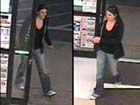

The hem of a calico skirt disappearing around a corner, lowering light on the Bruton Parish Church steeple (which houses the same brass bell that rang for George Washington himself), the sound of a door being bolted and, from a tavern on Duke of Gloucester Street, a fiddle: This is Colonial Williamsburg calling it a day, which is kind of what it did after its service as the cradle of American ideals was over and the Virginia capital moved to Richmond in 1780. For the next 150 years the Tidewater town was so sidestepped by time and events that city fathers forgot to hold a municipal election in 1912.
Williamsburg woke up to become an American shrine, of course. As the capital of the oldest, biggest, wealthiest English colony in the New World, it helped forge the idea of an independent America. And it's about as real as such a place can be, meticulously restored or rebuilt thanks to William A. R. Goodwin, Bruton church rector from 1926 to 1938, who had the vision, and John D. Rockefeller Jr., who brought money and commitment to one of the most comprehensive historic preservations in the world.
Apprentice Abby Cox plies her trade in a Colonial Williamsburg millinery shop, where hats and dresses are made with 18th-century technology. (Matt Eich)
Entering the 300-acre historic district, you encounter people in 18th-century dress actually plying colonial trades such as shoemaking, brickmaking, weaving and blacksmithing. Patrick Henry fulminates against the Stamp Act in the House of Burgesses. Citizens protest that Lord Dunmore, Royal Governor of the Virginia Colony, confiscated gunpowder from the magazine after shots rang out in Lexington and Concord.
But don't stop reading because you think you've been there and done that (or you think historical re-enactments are hopelessly corny). There are stories a single trip simply can't tell, places you may have passed by or, like me at age 8 on my first visit, were too young to appreciate. Bassett Hall, for instance, is a Colonial-era farmhouse lovingly restored to its appearance in the 1930s when the Rockefellers spent the spring and summer there. Among the prizes at the nearby Abby Aldrich Rockefeller Folk Art and DeWitt Wallace Decorative Arts museums—with subterranean galleries entered through the historic Public Hospital for the mentally ill, which admitted its first patient in 1773—are the blissfully dreaming Baby in Red Chair portrait and the whimsically carved 1920s hippopotamus-rhinoceros Victrola console. And just west of the village is the Christopher Wren-inspired old campus of the College of William & Mary, founded six years before the capital moved to the village from Jamestown in 1699.
Tourists can mingle with re-enactors on the streets of colonial Williamsburg. (Matt Eich)
Also, previously ignored facets of history have been brought to light, especially the lives of black slaves, who once made up 51 percent of the population; exhibits and re-enactments explore how slaves responded when the British offered to free them in exchange for fighting against the Colonists.
The place has changed, too. "New" venues have opened, like R. Charlton's Coffeehouse, right out of Bos¬well and Johnson. High-tech investigations have guided restorations of structures including the Peyton Randolph House, which was formerly oyster-shell white and has been painted hematite red. "I'm still getting hate mail about that," says Edward Chappell, director of architectural and archaeological research.
Tourists can mingle with re-enactors on the streets of colonial Williamsburg. (Matt Eich)
Modern Williamsburg has had to chart a delicate course, growing with what can be thought of as America's Roman Forum at its heart. Many hotels, restaurants and shopping malls line designated commercial corridors, and pose no visual threat to the scenic integrity of the preserved colonial town; homeowners in neighborhoods near the historic district must choose exterior paint colors in accord with architectural preservation.
Yet the 21st century isn't hard to find. Residents hit the Saturday farmer's market in Merchants Square and take part in Art Month, a fall festival that opens galleries, stages concerts, sponsors Virginia wine tastings and turns Duke of Gloucester Street in the historic village into a fine arts fair. William & Mary has its Muscarelle Museum of Art and Phi Beta Kappa Hall, where the Virginia Symphony Orchestra performs.
But there's no doubt the past is the town's favorite pastime. Middle schoolers put their video-game consoles aside to perform with the Fifes and Drums, which rallies the village for revolution with tunes such as "The World Turned Upside Down."



















